Sediment Recirculating Flume
|
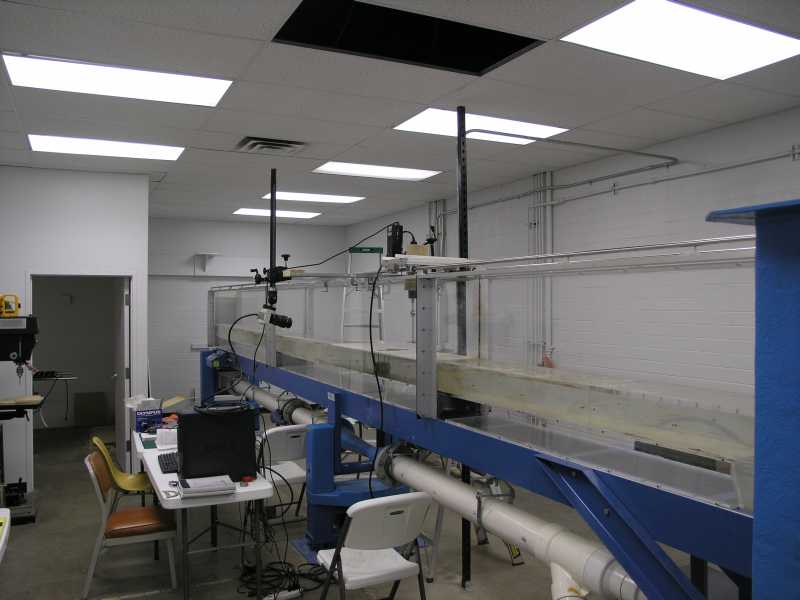
|
The sediment recirculating
flume is 8.5m in length by 30.5cm in width. A false floor in the flume
allows for instruments to enter the flume from the floor bed. The
picture above shows the flume setup for doing cohesive sediment
transport experiments. Sediment samples are placed in a cylinder
below the false floor and can be extruded into the flow as the sample
erodes. Shear stress and velocity is measured with an accoustic Doppler
velocimeter.
|
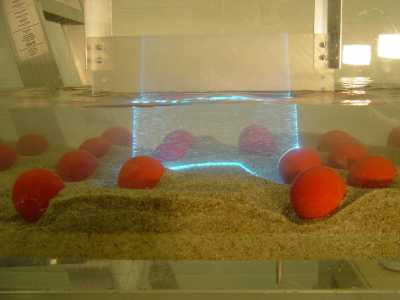 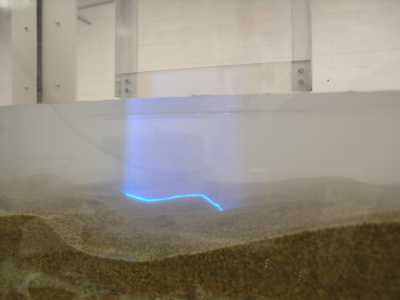 |
|
A 4 Watt Argon-Ion laser
generates a 1.5mm thick sheet of light that is used in conjuction with
a high-speed video camera to conduct visualization and PIV studies of
turbulence and sediment motion in rivers.
|
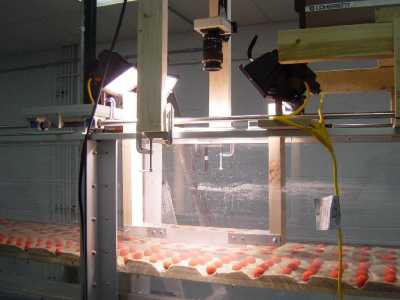 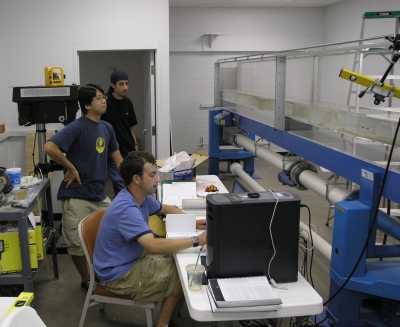 |
|
Stream Table
|
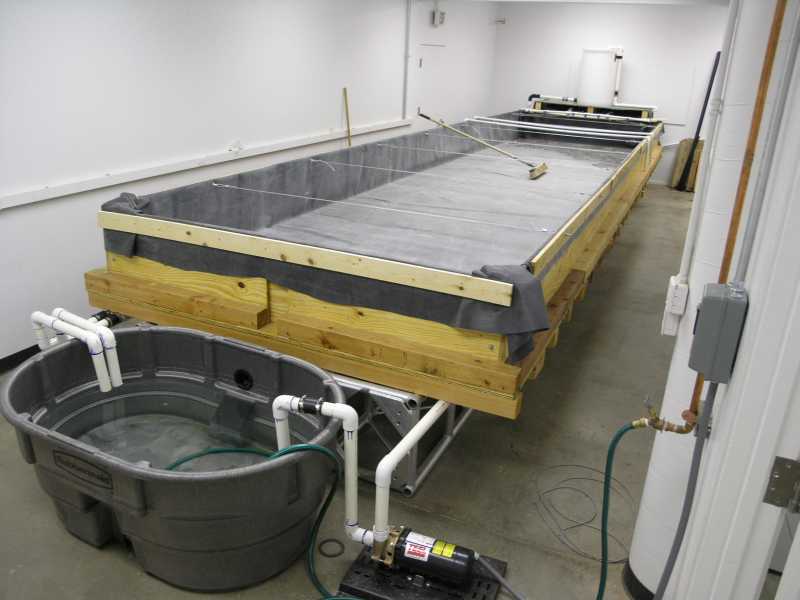
|
The stream table is 9m
long 2.3m wide and 45cm deep. It will be used to study stream incision,
drainage evolution, sediment transport-vegetation interactions, and
large-scale turbulence in differing river geometries. The first set of
experiments will examine the erosion and deposition patterns of
differing stream anomaly incision mechanisms, including antecedence,
stream capture, and lake overflow.
|
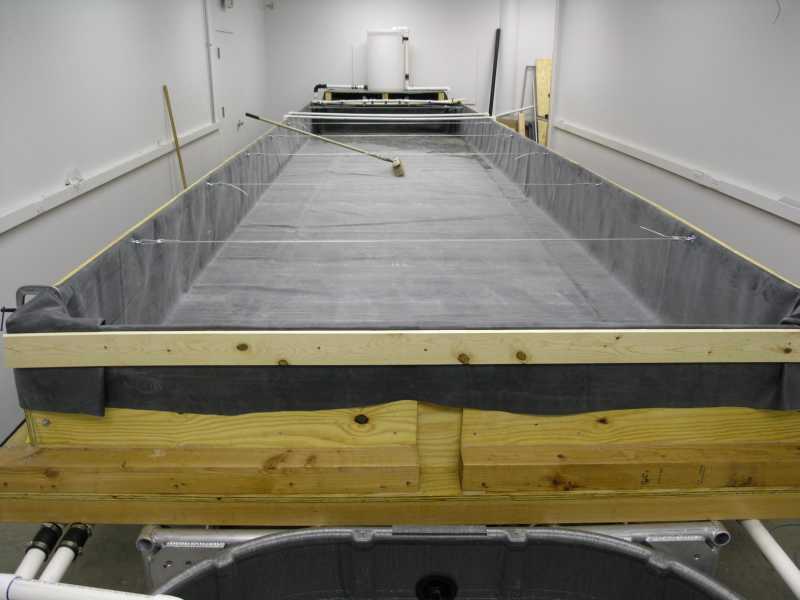
|
|